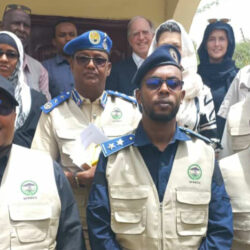Veterinary Technician in Somaliland
-

- by Amber Davis September 6, 2022
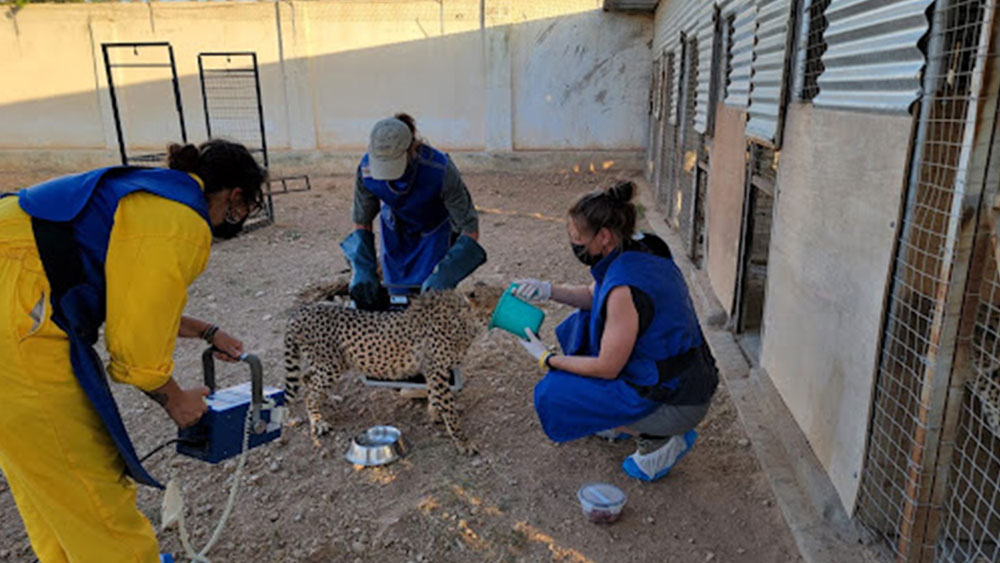
I learned about the Cheetah Conservation Fund while studying abroad in Botswana during my undergraduate degree. I had a fascination with big cats already and the seed was planted. Years later, I saw Dr. Laurie Marker speaking at a One Health Symposium at Cornell University. Afterward, I decided to finally apply to volunteer for CCF as a veterinary technician.
I wanted to give CCF and the cheetahs as much support as I could and I also wanted to learn more about veterinary medicine with a more generalized approach, such as herd or population medicine, as well as how to practice veterinary medicine with limited resources. My interests in veterinary medicine are mainly focused on small animal emergency medicine, community engagement and serving low-income populations. I have always had an appreciation for the importance of educating myself, clients, peers and the public about One Health which is a collaborative approach to veterinary medicine that focuses on the interconnection between people, animals, plants, and their shared environment.
While I was in Botswana, I learned about human-wildlife conflict and the necessity for community engagement to help combat declining big cat populations in Africa. Botswana uses Community-Based Natural Resource Management (CBNRM) as a key model. I wanted to learn how CRBNM was used in Namibia and how CCF works with the communities to help declining cheetah populations. I wanted to study and learn about CBNRM from a clinical and veterinary perspective.
I discovered that, in many ways, cheetahs have similar health issues to domestic cats and dogs. Working with them was a great opportunity for me to challenge what I have learned in veterinary school and extend my working experience as a technician. There are also many differences and they are not domestic animals so they require different treatment strategies, which helped my critical thinking skills.
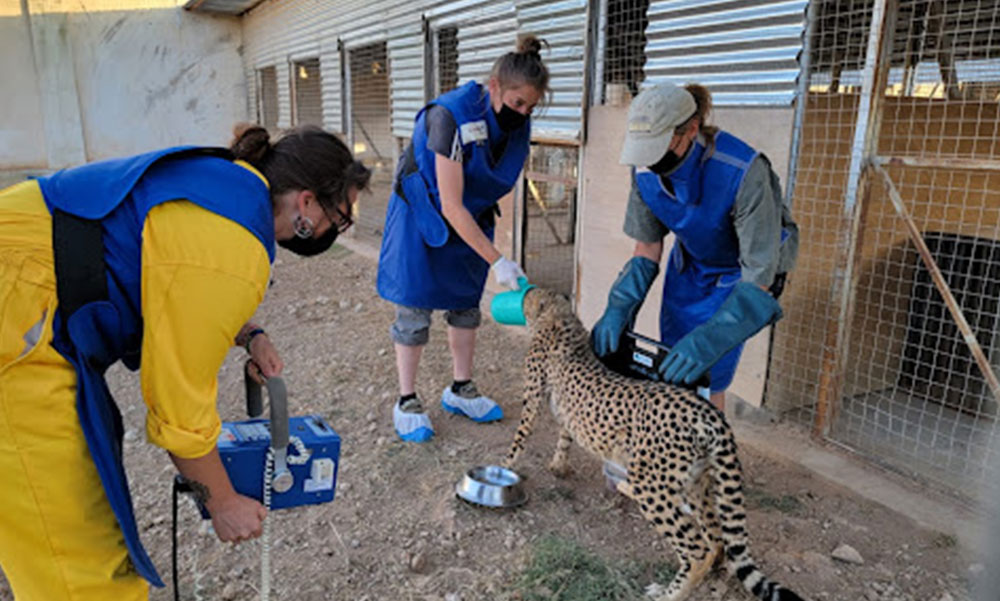
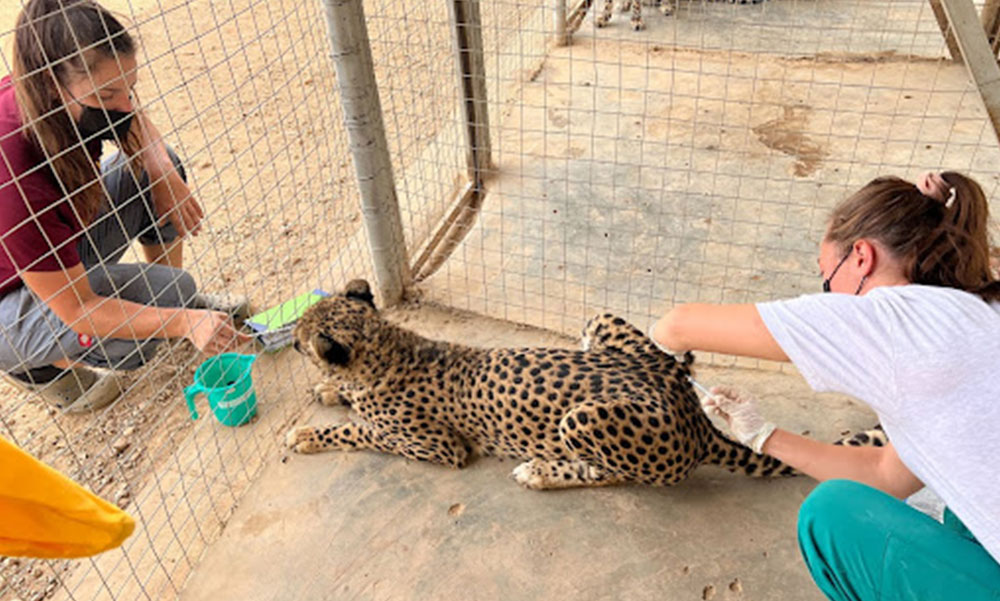
At CCF, we prioritize low-stress care and helping the cheetahs learn to participate willingly in treatments, as seen below. The pitcher contains some blood, which serves as a very nice treat, and also a distraction from the x-ray procedure. The pitcher is the perfect size to fit around her head snugly but not confine her. It acts as a visual blocker to reduce stimulation during the x-rays.
Full PPE is required for staff, volunteers and interns working inside of the cheetah enclosures to reduce potential for disease transmission between us and the cheetahs. Olivia, the cheetah with the water pitcher on her head, has been experiencing idiopathic food bloat and lethargy. During my time at CCF in Somaliland, I helped to take some x-rays so we could track how her stomach contents progressed through her gut.
Vaccinations are incredibly important and keeping up with immunizations is one of our top priorities. In the photo above, I am vaccinating one of the mature cheetahs ~2 years of age. This is an example of how we train the cheetahs to accept veterinary care with minimal stress. Here, the cheetah is offered food, on a small spoon, by volunteer cheetah keeper, Megan, while the vaccination is given. This works for many other procedures as well.
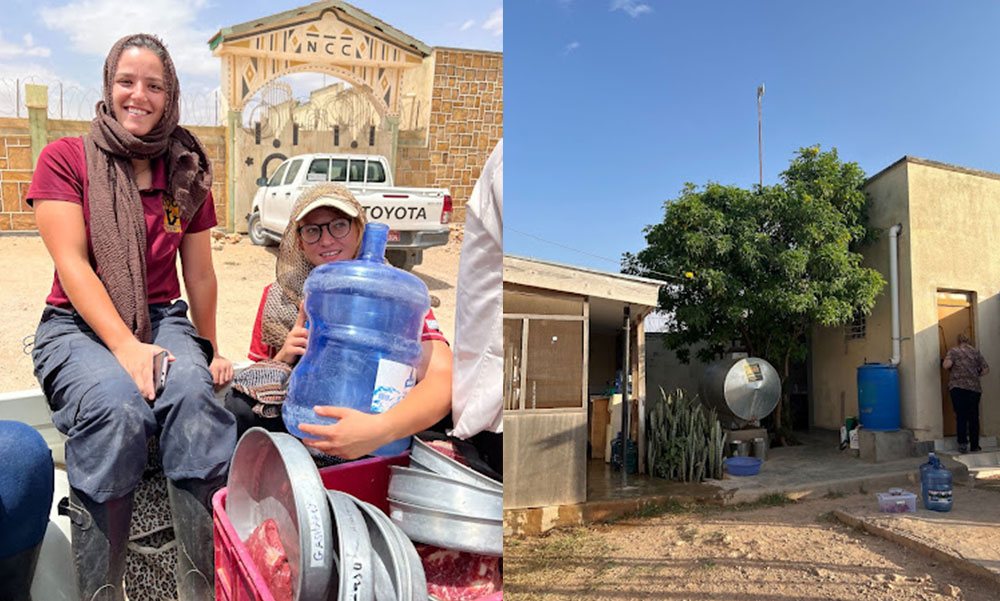

The photos above are of one of our Cheetah Safe Houses (SH1). Inside our veterinary clinic and the cheetah kitchen the keepers and the veterinarian care for the youngest of the confiscated orphaned cubs. These cubs usually need daily veterinary treatment and a care management plan that is more active, like frequent vaccinations and deworming.
Most of my time volunteering as a veterinary technician involved working with the veterinarian in SH1. Each morning, the veterinarian and I would go to each of the three safe houses and perform the rounds with the keepers. This helped us to know the health status of the cheetahs every morning and helped determine the daily care plan.
There was no lack of work to do. When I was not helping to care for the cheetahs, I was helping input medical data into online databases. I kept the medical charts up to date to track each cheetah’s medical record and treatments.
While riding the lunch truck (filled with meat for the cheetahs) between safe houses we observed the cultural custom of covering our heads in public. Somaliland is a Muslim country, and as volunteer guests, we took extra care to be respectful.
During the last few days of my tenure at CCF, we received a call that individuals had taken two male cheetah cubs from the wild. Once the Somaliland government safely confiscated the cubs, they were transported to our safe house. The two tiny cubs below had been with their captors for an estimated four weeks already. Thankfully, they were in pretty good health when we received them. This is highly uncommon. Most of the cubs CCF receives are in terrible health, full of parasites and malnourished.
Because these cubs are taken from the wild and their mothers at such a young age, they are not able to be released back into the wild. Additionally, many of the cubs CCF receives also have genetic disorders (such as bone malformations) or infectious diseases (such as herpes virus, coronavirus and respiratory diseases) that also prohibits their release into the wild. These animals will need medical intervention for the remainder of their lives, including monthly preventatives and yearly vaccinations.
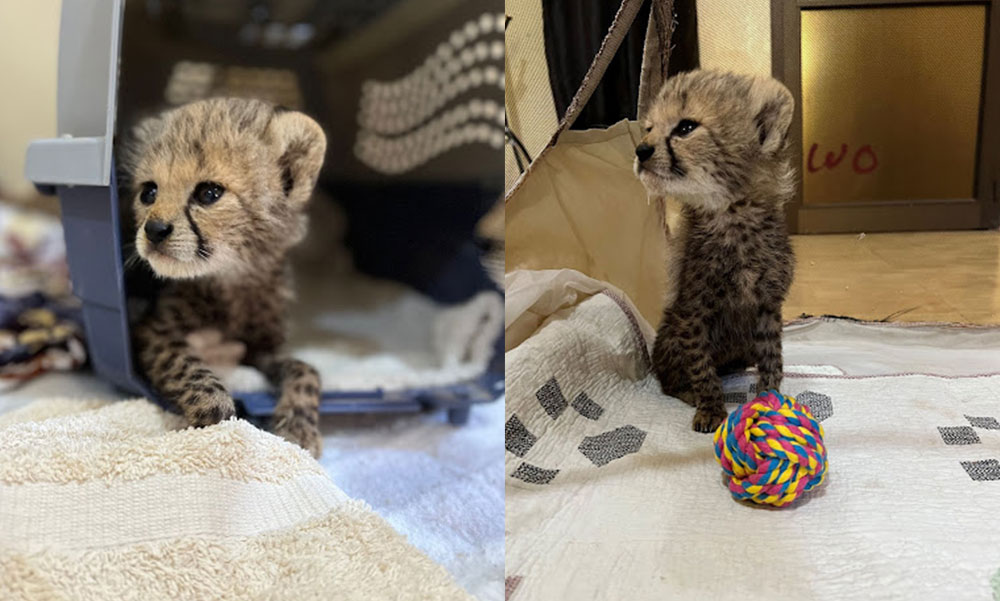
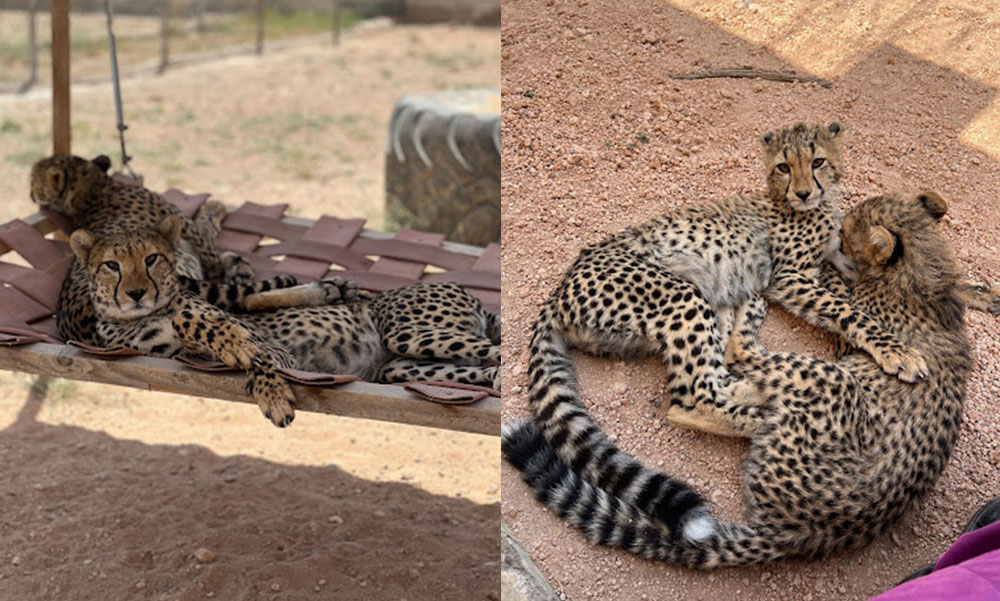
It is important to properly socialize them to people because they will need to have regular veterinary care. Throughout their lives, we want to provide care in the least stressful way possible. We use a mesh tent to acclimate new cubs to our facility and volunteers while also making sure they do not wander off or get themselves into trouble with electric cords and other inside dangers they would not be familiar with. They need to be around humans at this age because their health status is being monitored closely. We feed them several times per day to accommodate their size, age and natural feeding schedule.
The two female cheetahs pictured above in their hammock and on the ground are comfortably resting while in my presence. I was in their enclosure to monitor the behavior/health of one of their house mates. Their behavior in this picture shows the importance of proper socialization. Since these cheetahs were socialized to CCF’s staff and volunteers they can be free from fear and comfortably get medical treatment.
Each day the keepers clean the cheetah enclosures, so it is a high priority for the cheetahs to be socialized and desensitized to our presence so that everyone can remain safe and healthy.
CCF’s Cheetah Safe House 1 (SH1) in Somaliland, has some of the youngest orphaned cheetah cubs. At this age, male and female cubs are housed together and they are placed with similar sized cubs. We also keep the cubs that were rescued together housed together while in rehabilitation. This allows them to socialize with cheetahs they are already familiar with. In between rounds and medical treatments, I would go inside this enclosure and just sit down to get the cubs used to my presence. Each of the cubs has their own unique personality as well as comfortability with human interaction. It is important to make them feel safe around people by letting them approach you rather than you approaching them. Watching them snuggle together and play was a nice pass time too 🙂


At the time of writing CCF’s Field Centre in Somaliland had 87 cheetahs and one leopard. The cost to care includes providing meat a total of $7000 per week or $28,000 per month. This amount will continue to grow as the cubs grow.
Cub season in the wild is October – January, and we anticipate that more cubs will be coming to CCFs safe houses again very soon. We need your help with raising the much needed funds to care for the cubs.
CCF is creating a Sanctuary for these cubs in an area called GeedDeeble which will be within the countries 1st national park. We are hopeful that these facilities will be ready by January to move the cats to their new, natural and expansive facilities. Thanks to our interns and volunteers who are helping care for these confiscated, orphan cubs.
Related Reading
-
June 12, 2024
Continuation Assigned Task is National Obligation -
March 8, 2023
Support the Cheetah Rescue and Conservation Centre -
September 5, 2022
Cheetah Confiscations: A Frontline Perspective

